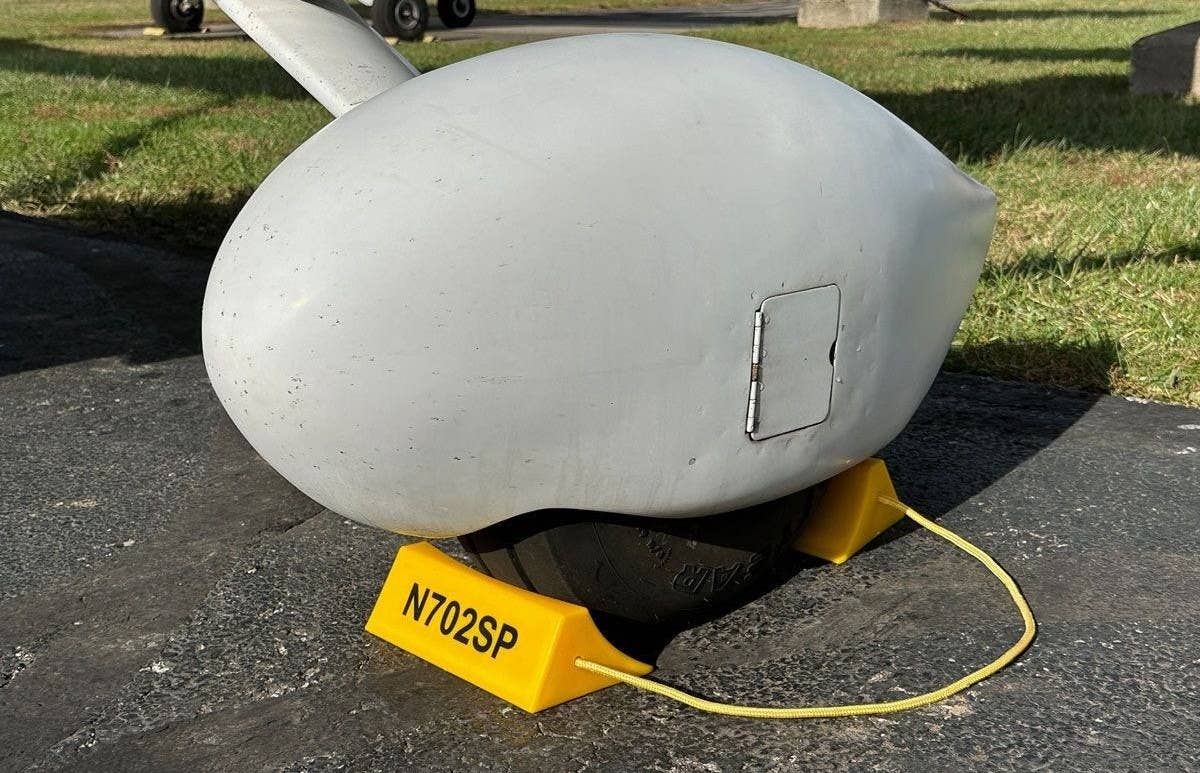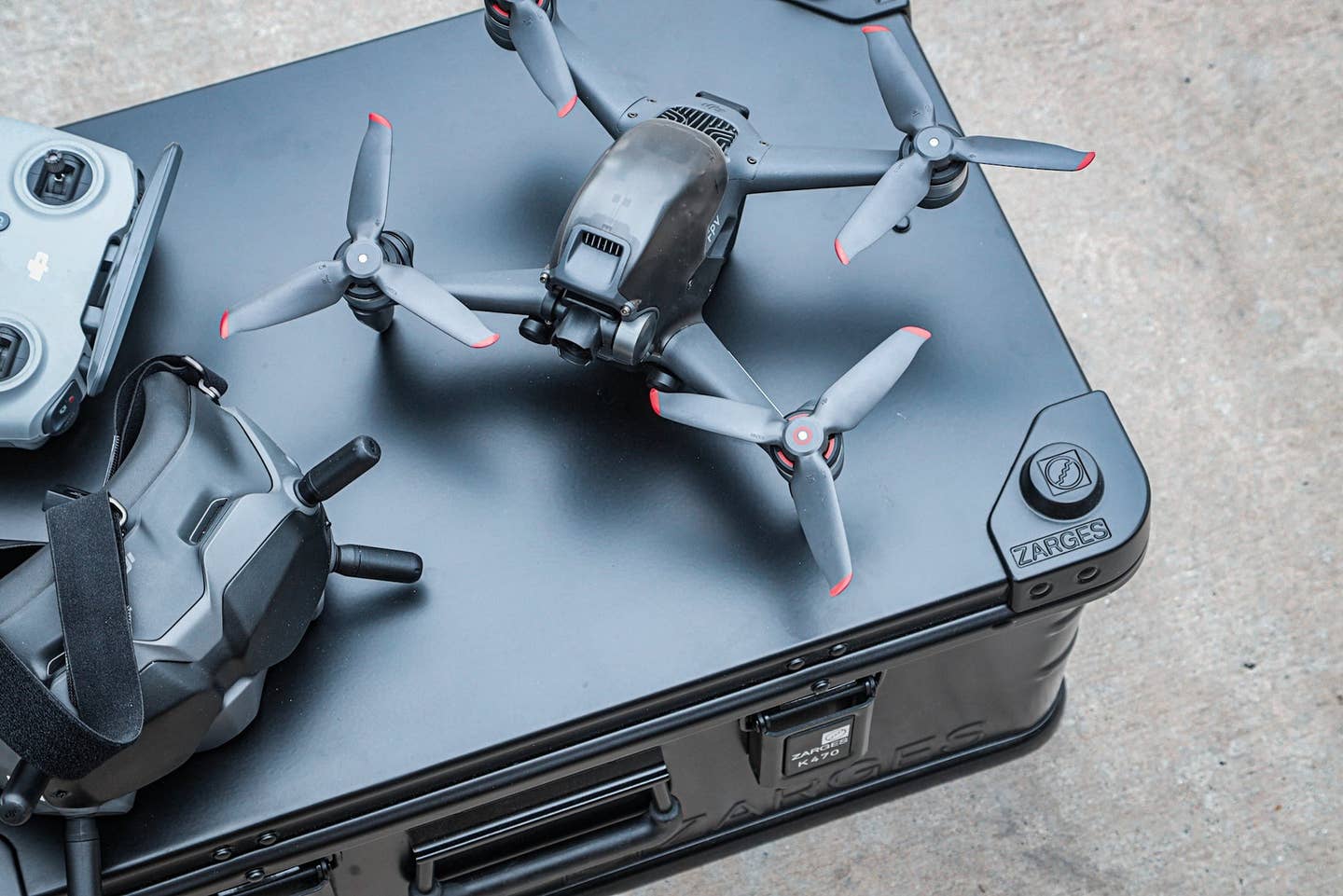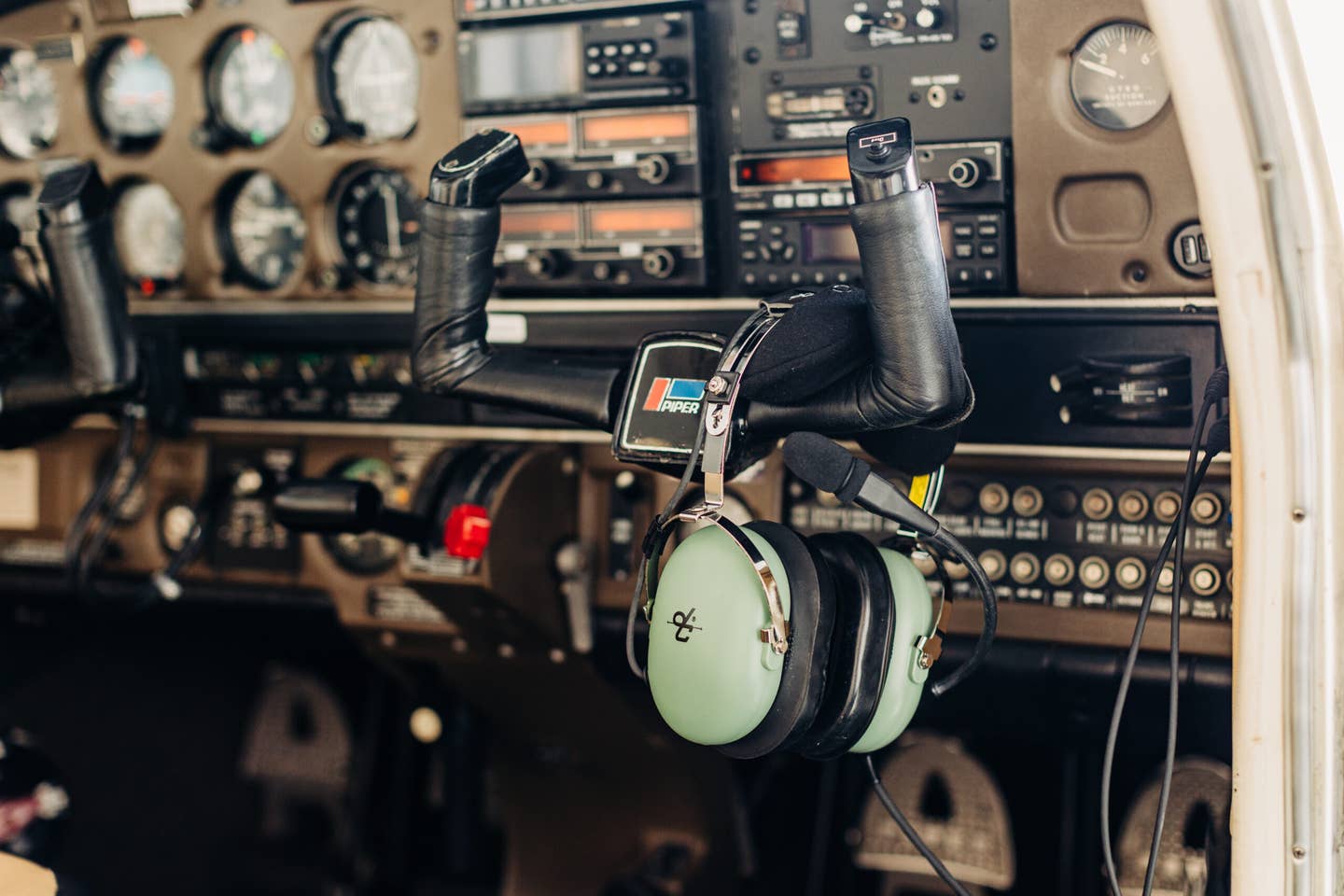How to Pick Aircraft Chocks
Find out everything you need to know about selecting the best aircraft wheel chocks for the safe parking of your aircraft.

These plastic chocks are ideal for storage in the aircraft’s baggage compartment. [Photo courtesy of Sporty’s]
Choosing the appropriate chocks is essential for ensuring the safety and stability of your aircraft while it is parked. With various types of chocks available on the market, it can be challenging to make the right choice.
This guide aims to demystify the selection process by providing detailed insights into the different chock types, key factors to consider when making a selection, as well as tips for their safe and effective use.
Let’s explore the different choices and add one of them to your list of aviation equipment today.
Quick Look: 7 Best Types of Aircraft Wheel Chocks
- Best of rubber chocks: Rubber Wheel Chocks
- Best of plastic chocks: Plastic Wheel Chocks
- Best of aluminum chocks: Aluminum Wheel Chocks
- Best of urethane chocks: Tigerchocks AC201 Urethane Lightweight Commercial Aviation Wheel Chock
- Best of rope chocks: Rope Chocks
- Best of low-profile chocks: Low Profile Rubber Wheel Chocks
- Best of innovative chocks: Avid Labs Wheel Chock System
Types of Aircraft Wheel Chocks
When choosing the best aircraft wheel chocks, there are many options available, each catering to different needs and preferences. Here is a quick rundown of the seven best types of aircraft chocks, helping you make an informed decision for safely parking your aircraft.
Rubber wheel chocks
Best of: Rubber chocks
The Rubber Wheel Chocks are heavy-duty chocks made from recycled rubber. These beefy chocks weigh over 10 pounds and are ideal for twins and light jets. The reflective tape on all three sides and a high visibility rope makes them easy to spot during preflight. One pair is needed for each wheel.
Key features and specifications
- Size: 9.75” x 4.5” x 4.5”
- Weight: 10 pounds per pair
- Additional features: Heavy duty; made from recycled rubber; ideal for twins and light jets; reflective tape on all three sides; high visibility rope
- Warranty: One-year limited; 30-day return policy
Disadvantages
- The Extra-Large Wheel Chocks ($99.95) may be more ideal for larger aircraft.
- These chocks may not be ideal for low-profile aircraft.
Price: $49.95
Plastic wheel chocks
Best of: Plastic chocks
The Plastic Wheel Chocks are simple, robust wheel chocks ideal for storage in the aircraft’s baggage compartment. The inside concave wall provides maximum surface area for contact with the aircraft wheels. While the reinforced, yet hollow design keeps the weight of the chocks down and does not retain water. One pair is needed for each wheel.
Key features and specifications
- Size: 8” x 4.25” x 2.5”; 23” rope
- Weight: 1 pound per pair
- Additional features: Lightweight; yellow color for increased visibility; reinforced, hollow design; waterproof
- Warranty: One-year limited; 30-day return policy
Disadvantages
- Over time, plastic can become brittle and may crack, especially if exposed to harsh weather conditions.
- They may not be ideal for low-profile aircraft.
Price: $15.95, plus $15 for personalization
Aluminum wheel chocks
Best of: Aluminum chocks
The Aluminum Wheel Chocks are ideal for general aviation aircraft. The chocks are constructed with an indestructible ALMAG 535 aluminum/magnesium alloy and feature a 10-year corrosion resistance warranty. A concave tire surface, together with the hollowed bottom, keeps aircraft in place. One pair is needed for each wheel.
Key features and specifications
- Size: 5 3/8" x 2"; 27” rope
- Weight: 2 pounds per pair
- Additional features: Lightweight; safety yellow, powder coat finish; anti-skid; rust resistant; abrasion resistant
- Warranty: One-year limited; 30-day return policy
Disadvantages
- The Polished Aluminum Wheel Chocks ($39.95) may be more ideal for conventional looking aluminum chocks.
- They may not be ideal for low-profile aircraft.
Price: $29.95, plus $15 for personalization
Tigerchocks AC201 urethane lightweight commercial aviation wheel chocks
Best of: Urethane chocks
The Tigerchocks AC201 chocks are designed for business, commercial, cargo, and military aircraft. The urethane wheel chocks feature a contoured design that fits the tire curvature to absorb wheel squat during loading and fueling operations. These chocks are made from impact-absorbing urethane and are resistant to the effects of different solvents used in the aviation industry, including oils, chemicals, fuels, and hydraulic fluids. One pair is needed for each wheel.
Key features and specifications
- Size: 5.5" x 4.5" x 2.75"; 24” rope
- Weight: 1.5 pounds per pair
- Additional features: Lightweight; molded-in, high visibility color; easy to use and ideal for carrying on the plane
- Warranty: None; 30-day return policy
Disadvantages
- The AC3521-S Urethane Lightweight Commercial Aviation Wheel Chocks ($90.12) may be more ideal for larger aircraft.
- They may not be ideal for low-profile aircraft.
Price: $63.55
Rope chocks
Best of: Rope chocks
The Rope Chocks are the perfect solution to the traditional chunky wheel chocks. Simple and easy to use anywhere, anytime, and on any tire. The polypropylene rope makes this a very lightweight, impact absorbing wheel chock. This tire immobilizer is safe and secure to use on various vehicle types, including airplanes, RVs, trucks, etc.
Key features and specifications
- Size: 54” x 1.5”
- Weight: 2 pounds
- Additional features: Red and mesh drawstring bag included; lightweight; weather resistant; durable; impact resistant; easy to install; yellow high visibility rope
- Warranty: One-year limited; 30-day return policy
Disadvantages
- Being lightweight, these chocks may not be as durable or robust as traditional wheel chocks in heavy-duty applications.
- Due to their material and design, these chocks may not provide the same level of stability as traditional wheel chocks in all situations.
Price: $40
Low-Profile Rubber Wheel Chocks
Best of: Low-profile chocks
The Low-Profile Rubber Wheel Chocks are durable, low-profile chocks, which are just the right size for Cirrus and other low-wheel-pant-clearance aircraft. The chocks’ rigid surface provides good traction against the wheel. The chocks are made from rubber with reflective yellow stripes on two sides. One pair is needed for each wheel.
Key features and specifications
- Size: 4.5” x 2”; 24” rope
- Weight: 1.6 pounds for the chock pair
- Additional features: Lightweight; compact size; durable; low profile; rigid surface; black rubber with reflective yellow stripes on two sides
- Warranty: One-year limited; 30-day return policy
Disadvantages
- The Low-Profile Wood Chocks ($16.95) may be more ideal for those who prefer conventional wood chocks.
- Some customers complain about the compact size of the chocks, making them too small for their purpose.
Price: $24.95
Avid Labs wheel chock system
Best of: Innovative chocks
The Avid Labs wheel chock system are innovative wheel chocks, which use the weight of the wheel to their advantage. The solid rubber chocks are connected by a heavy-duty polyester rope. The open side of each chock has an extra channel for the rope to slip into, which allows the user to cinch the chocks tightly to the wheel. The weight on the chock then constricts the rope, making the chocks rock solid. One pair is needed for each wheel.
Key features and specifications
- Size: 8” x 3”
- Weight: 4 pounds per pair
- Additional features: Innovative design; solid rubber construction; heavy-duty rope; maximum grip; compact size
- Warranty: One-year limited; 30-day return policy
Disadvantages
- Although the chock setup is straightforward, it might take slightly longer to position and secure compared with traditional chocks.
- They may not be ideal for low-profile aircraft.
Price: $39
Factors to Consider When Choosing Aircraft Chocks
When choosing aircraft chocks, several factors must be considered to ensure the safety of the aircraft and reliability of the chocks.
Aircraft type and weight
Different chocks are designed for specific aircraft sizes and gross vehicle operating weights.
For instance, larger aircraft with heavier weights require sturdier, more robust chocks made from materials such as rubber or aluminum, which can withstand the immense pressure exerted by the aircraft wheels.
Smaller aircraft, on the other hand, can utilize lighter chocks, such as those made from plastic, which are easier to handle and store.
Wheel size and configuration
When selecting aircraft chocks, it is vital to consider the size and type of wheels on the aircraft. The size of the wheels helps determine the right chock dimensions to ensure a snug and secure fit.
Different types of wheels, such as radial tires versus bias-ply tires, may also influence the choice of chock material and design. For instance, chocks with a concave surface or additional grip features can provide enhanced contact and stability for radial tires.
Lastly, for aircraft with a low wheel pant clearance, consider the height from the ground to the wheel fairing to ensure the chocks can fit snugly around each tire.
Ground conditions
The type of ground on which the chocks will be used is a crucial factor to consider when selecting aircraft chocks.
Chocks used on soft ground should have a wider base or additional grip, preventing them from sinking into the surface and ensuring they maintain their position. While standard rubber or plastic chocks often provide sufficient grip and stability on hard or paved ramps.
Additionally, chocks with enhanced traction features or those designed with flexibility in mind can offer greater performance on uneven terrain (e.g., uphill, downhill).
Frequency of use
Frequent use demands chocks that can withstand continuous pressure and harsh environments without deteriorating.
Look for materials such as rubber or aluminum, which are known for their long-lasting durability.
Additionally, ease of use becomes crucial as it reduces the effort and time required to secure the aircraft, particularly in high-turnover situations where quick and efficient operations are needed.
Budget
Higher-priced chocks often offer advanced features, enhanced durability, and are made from premium materials such as aluminum, which provides exceptional corrosion resistance.
However, less expensive options, such as plastic or rubber chocks, can still be highly effective for many general aviation needs, particularly if you are looking for lightweight and easily transportable solutions.
While it is important to find chocks within your budget, remember that investing in durable, high-quality chocks can save you money and prevent accidents in the long run by reducing the need for frequent replacements.
Tips for Safe and Effective Chock Use
To ensure the safety and security of an aircraft, it is essential to consider the following tips for chock use.
Follow manufacturer's instructions
Proper installation and usage of aircraft chocks are crucial to ensuring the safety and stability of the aircraft while it is parked.
Strictly follow the manufacturer's instructions, as different chocks may have specific requirements or best practices for optimal performance.
Position the chocks in front of and behind each wheel of the aircraft to prevent any forward or backward movement. Ensure the chocks fit snugly against the tires, making full contact with the wheel surface.
Inspect regularly
Inspecting wheel chocks regularly is crucial to ensure their effectiveness and longevity.
Check for wear, damage, or loose components that could compromise their performance. Over time, exposure to the elements, such as UV rays, moisture, and extreme temperatures, can cause material degradation.
Inspect the chocks for cracks, brittleness, and significant loss of original shape that might indicate they are no longer safe to use. Additionally, examine the ropes and fastenings for fraying, splits, or other signs of wear and tear.
Consider additional safety measures
For added safety, use multiple chocks to prevent the aircraft from moving, covering both front and rear wheels.
In addition to using chocks, use tiedowns or other safety devices to enhance aircraft safety. Tiedowns are essential, especially in windy conditions, as they provide extra stability by securing the aircraft to the ground.
Other complementary safety measures, such as wheel locks and brake systems, can also be employed to ensure the aircraft remains stationary.
Proper placement
Proper placement of chocks is crucial to ensuring the safety and stability of the aircraft.
Ensure chocks are placed correctly under the wheels to prevent movement by positioning them snugly against the forward and aft sides of the tires. This method creates a secure barrier that prevents rolling, even on sloped or uneven ground.
After placement, apply gentle pressure to verify the chocks are stable and will not dislodge easily.
Pick Your Aircraft Wheel Chocks Today
When choosing aircraft chocks, it is crucial to conduct thorough research to ensure you select the most suitable option for your specific needs.
Given the diversity of aircraft types and operating environments, not all chocks are created equal. Make sure to consider factors such as the gross vehicle operating weight and type of aircraft, the typical ground conditions where the aircraft will be parked, and how often the chocks will be used before making your final selection.
We hope our comprehensive guide has helped you narrow down the wheel chocks appropriate for your specific aircraft.
Skip the long store lines, and let’s add one of these airplane chocks to your virtual cart today. Most items ship within a couple of days and are ready for immediate use.
Now that you have the aircraft wheel chocks for your aircraft, make sure to check out aircraft tiedowns to make sure that your aircraft is always fully secured.
FAQ
How do I choose wheel chocks?
First, assess the type and weight of the vehicle (i.e. aircraft). Next, examine the wheel configuration and number of wheels on your aircraft, as this will determine whether you need multiple chocks or specific chock designs to secure your aircraft effectively. Consider the ground conditions where your aircraft will be parked and think about how often you will use the chocks. Lastly, remain mindful of your budget, as prices for aircraft chocks can vary significantly, and investing in higher-quality chocks may provide better long-term value.
What size wheel chocks do I need?
The size of wheel chocks you need is dependent on several factors, including the type and weight of your aircraft, as well as the wheel size and configuration. For light aircraft, smaller chocks such as plastic or low-profile rubber chocks are often sufficient. For heavier aircraft or those with larger wheels, there are more robust options, such as rubber or aluminum chocks.
What wheel chocks do I need?
For smaller, lightweight aircraft, plastic or low-profile rubber wheel chocks are typically sufficient due to their ease of handling and lightweight properties. Larger aircraft, on the other hand, require robust and heavy-duty options such as rubber or aluminum chocks, which can withstand the substantial weight.
What are the requirements for aircraft chocks?
Aircraft chocks must be sturdy and durable, made from materials such as rubber, plastic, aluminum, or rope. These materials should withstand various weather conditions and provide adequate grip on diverse surfaces, such as concrete, asphalt, or dirt. The size of the chocks is also critical, as it should be appropriate for the wheel size and aircraft weight specifications.

Sign-up for newsletters & special offers!
Get the latest FLYING stories & special offers delivered directly to your inbox






